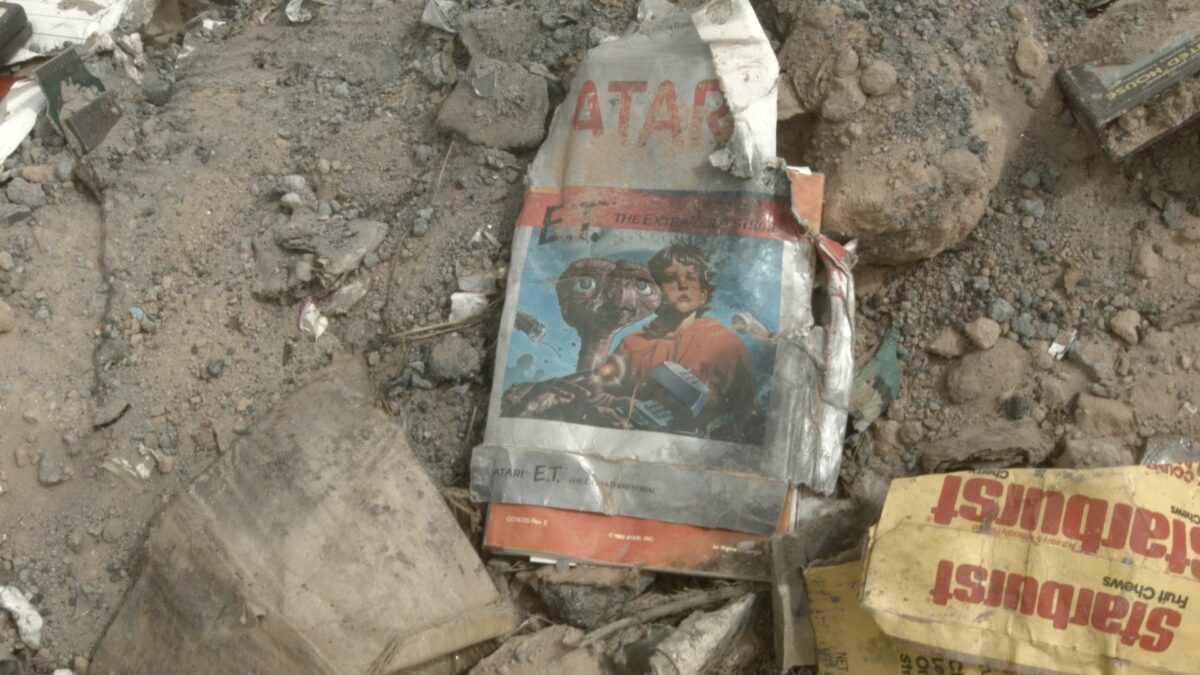In 1983, the video game market officially crashed. Atari, the biggest player in the game at that point in time, had spent millions of dollars on a single game that has gone down as the biggest flop in video game history. All of a sudden, a burgeoning industry was on the brink of death, and it may have fallen over the edge if Mario and friends hadn’t come along a couple of years later.
E.T the Extra-Terrestrial is rightfully regarded to be one of the greatest films ever made, and in the world of media, if something is successful on one platform, it will likely be successful on another. Atari snapped up the rights to make a video game adaptation for an eye-watering $21 million in 1982, accounting for inflation that translates to about $62 million today. Atari wanted the game on shelves for the holiday season 1982, less than six months after the release of the film.
[mm-video type=video id=01fttwj6bjqf2nhs8d2w playlist_id=none player_id=none image=https://images2.minutemediacdn.com/image/upload/video/thumbnail/mmplus/01fttwj6bjqf2nhs8d2w/01fttwj6bjqf2nhs8d2w-1d224f30a8b663159253117f92224565.jpg]
So naturally, Atari got a whole team working round the clock on it…Except, no; that’s not what it did. Instead, it asked Howard Scott Warshaw to produce the entire game in five weeks, by himself. Warshaw made good on that five-week deadline, but there were consequences for the game being made so quickly.

The final product was, not looked upon favourably by consumers. You played as the iconic alien gathering all the parts to assemble the phone with which he can contact his home planet…there must be a cooler way to phrase that. It wasn’t the most entertaining gameplay loop, and it especially wasn’t helped by one very frustrating issue that saw you repeatedly fall in a hole if you weren’t very precise with your inputs.
Unfortunately, if you just booted the game up without reading the manual, you’d have no idea what you were supposed to do. Thanks to constraints with both time and technology, there are no instructions in-game so a thorough read of the manual was in order, something every kid wants to spend their Christmas morning doing.
It quickly became the talk of consumers that the game was not what anyone had hoped for. This was bad news for Atari, which was hoping for a big return on its $21 million investment. The game didn’t sell well, and a very large portion of people who did buy it ended up getting a refund once they tried playing it for five minutes.
These days publishers and development studios are so intricately funded and careful with their spending that the failure of a single game will rarely cause a company’s downfall. However, when the industry was still young, there was no safety net. Smaller companies had folded after much smaller failures, so something this huge was unrecoverable.

So Atari folded and the biggest names in Western video games were suddenly out of a job. Normally this is where a story like this would end, but there was still a big problem. With such high anticipation for the game, all the copies of E.T and other Atari games that lined store shelves had to be dealt with, but where to put them?
Now comes the infamous part of the story you may already know. Rather than sell them at bargain-bin prices to get at least something out of them, they were all thrown into a New Mexico landfill and buried for all eternity; or rather, until 2014 when they were dug up.
Those who excavated the site found 1,300 buried games, about a hundred of which were E.T, but that was barely scratching the surface of what there was to find. According to former Atari manager, James Heller, 728k games are in that underground landfill, although it’s probably for the best they weren’t all dug up.
While this game wasn’t the only factor in the 1983 video game crash, it put on display how fragile a new media industry could be. Thankfully, Japanese companies like Nintendo were still booming, and they used this crash as an opportunity to make a much bigger Western expansion. Eventually, the industry recovered and now stands as the richest media industry in the world.
Companies are now smart enough to avoid single points of failure like this example, but it’s a terrifying reminder of how fickle markets can be, and how easily a string of poor decisions can undo years of success.
Written by GLHF.
[listicle id=1071233]
